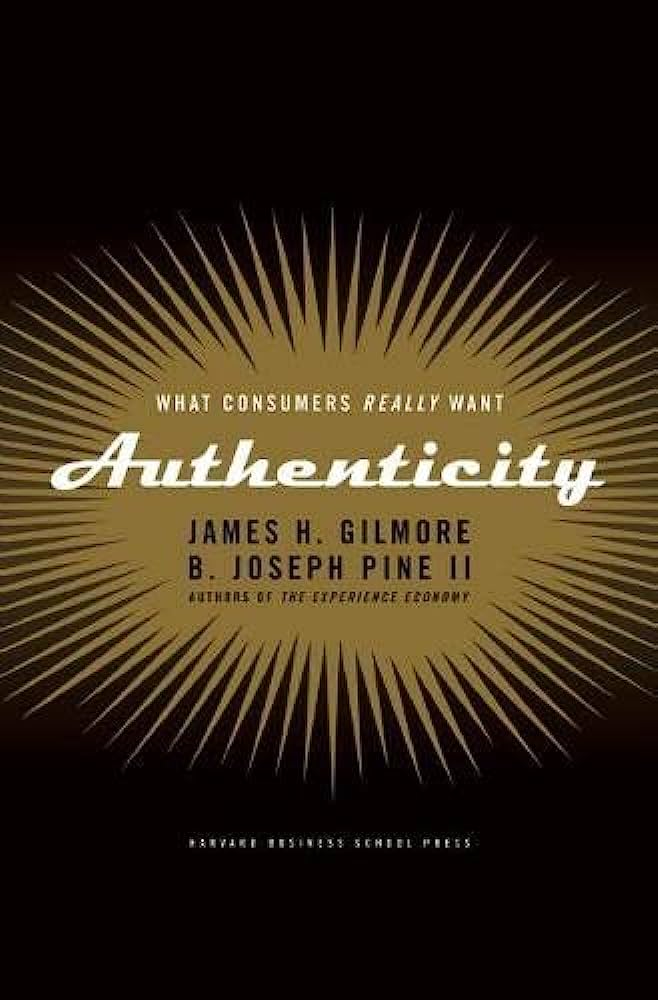Authenticity: What Consumers Really Want
RATING


In their follow-up to such seminal works as The Experience Economy (see Senteo review), Gilmore and Pine focus on the challenge of how to get and keep profitable customers.
Marketers need to address the problem of managing the perceptions of “real” or “fake” held by the consumers of an enterprise’s output. People increasingly make purchases based on how real or fake they perceive offerings, or how well a particular offering conforms to a customer’s self-image. The authors give many examples of “real” and “fake” offerings, such as Disney and Starbucks.
The approach to “rendering authenticity” involves: exploring and defining your identity, or what it is “you will be true to;” defining your total offering “to be what you say it is;” and the possibility of joining these two together for forming a more powerful, authentic offering. The authors provide some new frameworks to their previous works, such as 5 Genres of Perceived Authenticity: natural authenticity (commodities); original authenticity (goods); exceptional authenticity (services); referential authenticity (experiences); and influential authenticity (transformations). Consumers in the Experience Economy, where everything seems more and more contrived, crave Authenticity, the new buzzword for the 21st century.
This book is essential reading for those interested in strategy and the previous works concerning customer experience. Authenticity creates a metric for further work concerning the measurement of customer experience. There are numerous examples of defining your company’s strategy for authenticity and how to carry it from strategy to implementation.
The book is highly theoretical in nature and comes across as somewhat academic (as opposed to a management book), in devoting so much explanation to what it means to be authentic. Examples include “understanding the physical reality: Minkowski space (a physicist’s construct). This makes the book a difficult read at times.
In 1998, Pine and Gilmore identified “experiences” as economic offerings distinct from commodities, products, and services. In so doing, they launched an entire field of consulting in “experiential marketing” and “experience management.” Since then, they have been studying how consumers determine the value of their paid-for experiences. One trait has risen to prominence: authenticity. How authentic is the experience? Is it what they expected? Why or why not? The authors introduce the concept of perceived authenticity, or how a consumer experiences a product, service, environment, communication, or person. Therefore, businesses must understand what it means to “render authenticity” in their consumer offerings and outreach, and they must learn to manage the process of, and excel at, rendering authenticity and behaving authentically. This book is arguably the first to provide some practical business advice and talking points for managers and marketers.
This book provides a theoretical framework for businesses to refine their offerings by “rendering authenticity,” and thereby convincing the consumer that their product or service is authentic. Good examples including Starbucks, Disney and the Geek Squad. It is also full of frameworks for understanding, such as the 10 Elements of Authenticity.

This book provides a theoretical framework for understanding Authenticity and opportunites for development of strategy and improvement. It also provides some useful frameworks for the design and implementation of this new model (10 Elements of Authenticity).
See content on this topic
Sales training for front line along with basic development and coaching principles for line management.
Understanding branding and communications from the standpoint of emotional engagement and building relevant and meaningful dialogue with customers.
This course covers a complete view of customer touch points (both physical and virtual) and a unique model for standardizing and managing customer contact models across channels including approaches for customer feedback, quality management, and migration.
Understand how the innovation process changes moving from functionality and channel design to a process focused on creating value for customers.
Experiential Branding & Communications – Improving Brand Integration Through Emotional Engagement.
This course covers a complete view of customer touch points (both physical and virtual) and a unique model for standardizing and managing customer contact models across channels.
Understand the value of a customer-oriented analytics package and how behavioral scenarios can be used to improve profitability through influencing behavior and usage.
To understand the principles of game dynamics and learn how to effectively use the elements of gamification in business: to involve customers, employees and contractors in the process.
Understanding branding and communications from the standpoint of emotional engagement and building relevant and meaningful dialogue with customers.
This course covers a complete view of customer touch points (both physical and virtual) and a unique model for standardizing and managing customer contact models across channels including approaches for customer feedback, quality management, and migration.
Experiential Branding & Communications – Improving Brand Integration Through Emotional Engagement.
This course covers a complete view of customer touch points (both physical and virtual) and a unique model for standardizing and managing customer contact models across channels.




 Copy Link
Copy Link
 E-mail
E-mail
 LinkedIn
LinkedIn
 Facebook
Facebook
 Telegram
Telegram
 WhatsApp
WhatsApp

















 Go Back
Go Back
Leave a Reply
You must be logged in to post a comment.